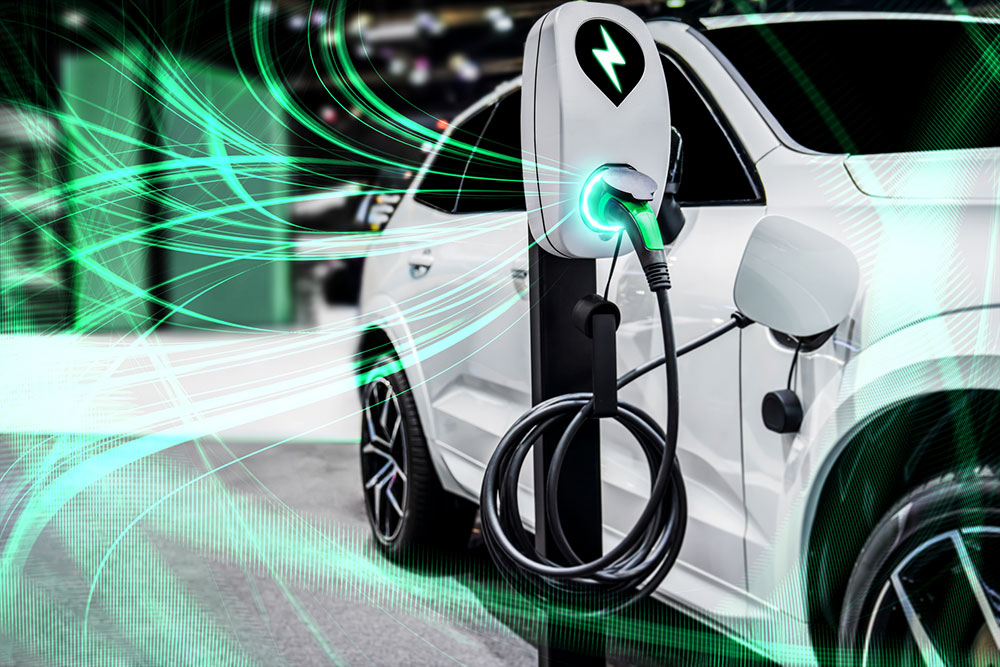Tech track: New Polestar has extra eye on safety

The upcoming Polestar 3 SUV will come with some advanced driver safety technology.
The new vehicle will have a new system called ‘Smart Eye’, which is a closed-loop system that monitors the driver and can potentially prevent fatal accidents.
Various cameras and sensors inside the cabin keep an eye on the driver's status and look for signs of drowsiness, distraction or even disconnect.
The system does this with the use of artificial intelligence algorithms.
If the system detects something troubling, by monitoring the driver's eyelids, head and eye movement, it will initiate warnings in the form of messages and sounds to attract the driver’s attention.
The system can even take preventative measures and stop the vehicle if needed.
“This technology addresses some of the main reasons behind fatal accidents and can help save lives by prompting the driver to refocus attention on the road – and can initiate preventive action when they don’t, or can’t,” Polestar CEO Thomas Ingenlath said.
EV battery degradation tested
One of the common questions that comes up in discussions about EVs is battery degradation.
All lithium-ion batteries will degrade with charging and discharging cycles but to what extent?
In Finland, a degradation test was performed on the battery of a Mercedes EQC that was used as a taxi and ran for 234,518km.
An important thing to note is that the car in question wasn't charged at high-power chargers, it mostly used a 40kW charger.
That may have impacted the degradation and possibly in a substantial way.
After two years and 234,518 km the battery capacity was measured at 73.3 kWh.
The initial usable capacity for the EQC is 80 kWh, so the battery only lost about 8.45% of its capacity from new.
This was after an estimated 585 charge cycles, though it's very hard to actually calculate how many there were.
This goes to show that even under an extreme use case, with lower power charging, severe battery degradation should not be an issue.
3D printing of electronics
A new Canberra-based start-up, born out of the Australian National University, has made a multi-material 3D printer that can produce prototype electronics at a fraction of their current price.
Syenta has just finished a $3.7 million seed funding round to help it deliver the first printers to its customers.
Syenta prints with electrochemistry, using a purely additive method.
“We basically focus the electric field into a very small area so that it (whatever material is being used) only deposits where we want it to deposit,” Head of Research and Development Ben Wilkinson said
This approach holds potential to reshape manufacturing costs due to simplicity, but also because the printer uses what are essentially precursor materials.
“That is, if someone wants to print with copper, for instance, the ‘ink’ is actually a copper sulphate,” Mr Wilkinson said.
“Our method turns the raw material into copper as we’re printing it.
“The other really cool thing about that is our process can work in reverse. So we’d use a voltage to turn the (for instance) copper back into copper sulphate, and that just becomes new ink that we can reuse.”
In terms of manufacturing, the approach strips away many process layers, thereby reducing the amount of both energy and materials that go into producing electronics.
The other side of the proposition is what the 3D-printed electronics themselves can offer to industries like solar, batteries and other renewable technologies.
“We can then make much more sophisticated designs and have complex geometries which improve performance for batteries and solar as well as reducing cost,” Mr Wilkinson said.
“The geometry of those two technologies (solar and batteries) very strongly determines the performance.
“So how far physically do ions in batteries have to move to charge or discharge? Or, in solar cells, what is the resistance of electrons moving through the solar cell?
“If we can make that really, really small, on a nanoscale, we can dramatically reduce that resistance or time to charge.”
Related topics
Things to note
The information in this article has been prepared for general information purposes only and is not intended as legal advice or specific advice to any particular person. Any advice contained in the document is general advice, not intended as legal advice or professional advice and does not take into account any person’s particular circumstances. Before acting on anything based on this advice you should consider its appropriateness to you, having regard to your objectives and needs.
Insurance Products (excluding Travel Insurance) are issued by RACQ Insurance Limited ABN 50 009 704 152 (RACQI) and arranged by its agent, RACQ Distribution Services Pty Ltd (RDS) ABN 35 116 361 650, AFSL 567130 and RDS' authorised representatives (including RACQ Operations Pty Ltd ABN 80 009 663 414, AR No. 234978 (RACQO). Conditions, limits and exclusions apply. RDS and RACQO are in the RACQ group of companies. One of the companies in the RACQ group of companies has a minority shareholding in RACQI.
RDS and RACQO have not taken your personal objectives, circumstances or needs into account when preparing advice regarding insurance products and you will need to consider whether the advice is appropriate for you. Read the Product Disclosure Statement (PDS) and any applicable Supplementary PDS before making a purchase decision on this product. You can also access our Target Market Determinations on this website. RDS receives a commission from RACQI for the policies it arranges. RACQO receives fees paid for services it provides to RDS. Further details about remuneration are available on request prior to purchasing.
Banking and loan products issued by Members Banking Group Limited ABN 83 087 651 054 AFSL/Australian credit licence 241195 trading as RACQ Bank. Terms, conditions, fees, charges and lending policies apply. This is general advice only and may not be right for you. This information does not take your personal objectives, circumstances or needs into account. Read the disclosure documents for your selected product or service, including the Financial Services Guide and the Terms and Conditions, and consider if appropriate for you before deciding.
Except for RACQ Bank, any RACQ entity referred to on this page is not an authorised deposit-taking institution for the purposes of the Banking Act 1959 (Cth). That entity’s obligations do not represent deposits or other liabilities of RACQ Bank. RACQ Bank does not guarantee or otherwise provide assurance in respect of the obligations of that entity, unless noted otherwise.
RACQ Bank subscribes to the Customer Owned Banking Code of Practice which establishes higher standards than the law requires. The Code reflects modern consumer expectations and developments in approaches to issues such as consumer vulnerability, guarantors, and supporting customers through financial hardship. Please read our Customer Owned Banking Code of Practice page for more information.
RACQ Operations Pty Ltd (ABN 80 009 663 414 AR 000234978) and Members Travel Group Pty Ltd (ABN 45 144 538 803 AR 000432492) are acting as an Authorised Representative of the issuer of the insurance, Tokio Marine & Nichido Fire Insurance Co., Ltd. (ABN 80 000 438 291 AFSL 246 548). Any advice set out above is general in nature only, and does not take into account your objectives, financial situation or needs. Before purchasing any travel products, please consider the RACQ Travel Insurance Product Disclosure Statement (PDS) and the Target Market Determinations (TMDs) that apply to these products. Whilst the PDS outlines the Terms and Conditions of these products, the TMDs outline the intended class of customers that comprise the target market for these travel products. This will allow you to consider which products best suit your objectives, financial situation and needs and consider the products appropriateness to your personal circumstances. TMDs also outline matters involving the distribution and the review of these products. The PDS, Supplementary PDS and TMDs for each travel product can be found here.

